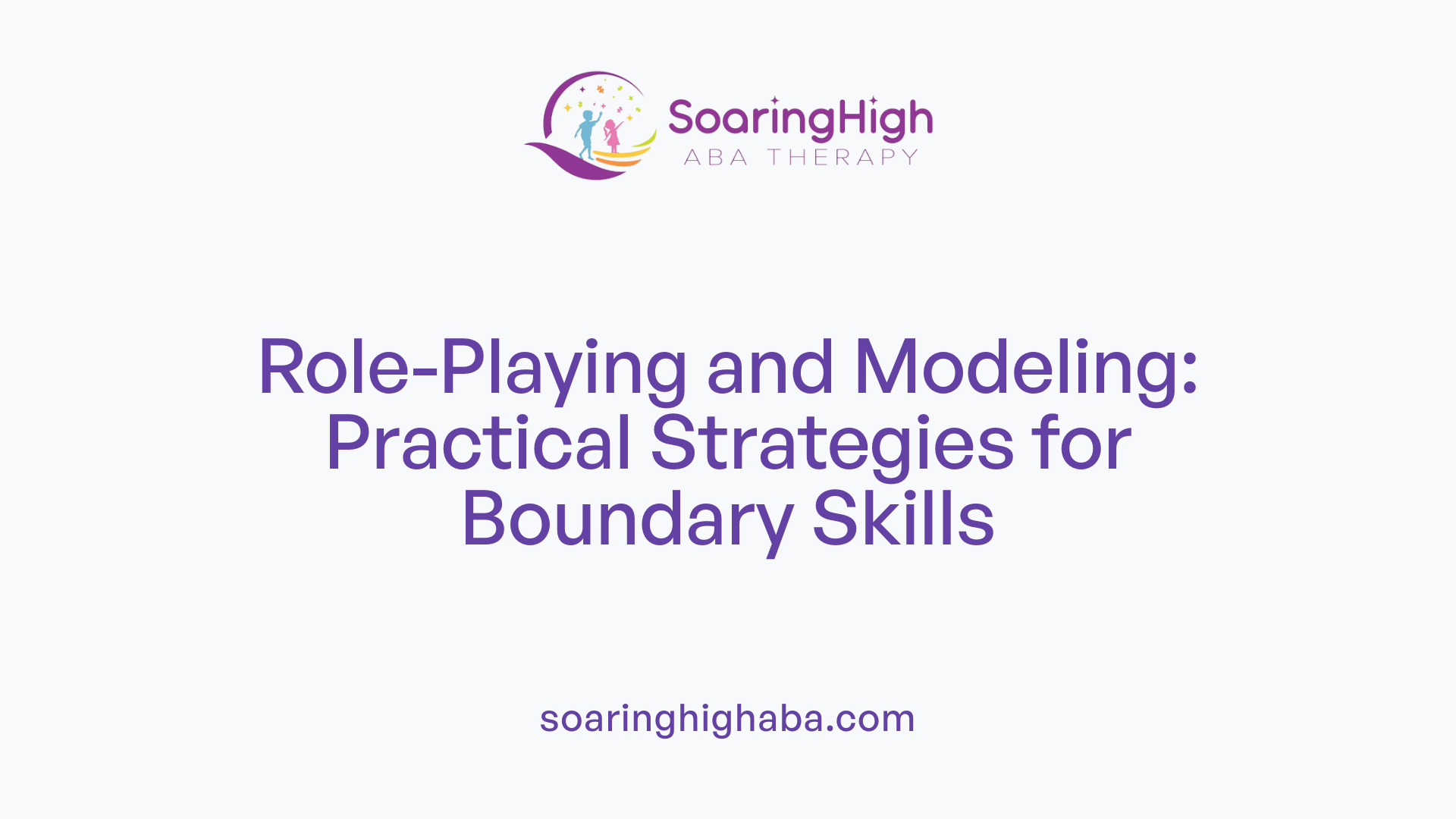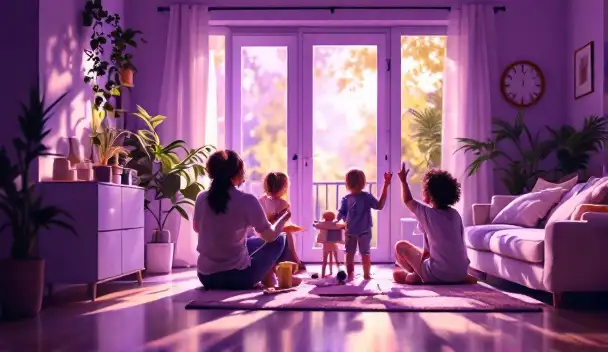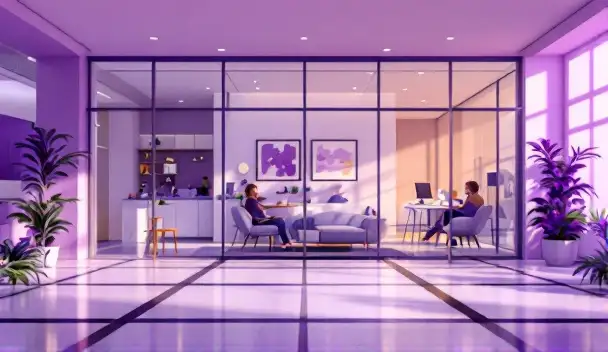Understanding the Importance of Social Boundaries in Autism Intervention
Building strong social boundaries is a fundamental aspect of social development for individuals with autism. Using Applied Behavior Analysis (ABA) techniques provides a structured, evidence-based approach to teaching these essential skills. This article explores how ABA methods can effectively foster social boundaries, improve social interactions, and promote independence, ultimately enhancing the quality of life for autistic individuals.
The Foundations of ABA in Social Skill Development
Principles of ABA in teaching social skills
Applied Behavior Analysis (ABA) uses a systematic approach to improve social interactions in children with autism spectrum disorder (ASD). Its core premise involves understanding that behaviors are learned and can be modified through consistent interventions. ABA focuses on teaching children essential social skills, such as interpreting social cues, maintaining eye contact, turn-taking, and sharing.
Behavior analysis principles such as reinforcement, modeling, and role-playing
ABA therapists employ several fundamental techniques. Reinforcement involves rewarding desired behaviors, like giving praise or tokens, to encourage repetition. Modeling demonstrates appropriate behaviors by demonstrating social interactions, while role-playing provides a safe environment for children to practice real-life scenarios. These methods help children recognize social norms and respond appropriately.
Assessment and personalization of interventions
Every child with ASD has unique needs. Therefore, ABA programs start with thorough assessments to identify specific social challenges. Therapists then develop tailored intervention plans, breaking down complex social skills into manageable steps. Goals are measurable, allowing progress to be tracked and strategies adjusted as needed. Personalization ensures that each child's learning style and challenges are prioritized, resulting in more effective skill acquisition.
Why use ABA techniques for social boundaries and skills?
Applying ABA techniques offers numerous benefits in fostering social boundaries and skills, including targeted improvement in communication and social interactions. Through structured methods such as role-playing, modeling, and positive reinforcement, individuals can learn to interpret social cues, initiate conversations, and respond appropriately in various social contexts. Personalization of interventions ensures that each person's unique needs are addressed, promoting skill generalization across different environments like home and school.
This evidence-based approach not only enhances social understanding but also builds confidence, independence, and emotional regulation, leading to a better quality of life for individuals with ASD.
Utilizing Role-Playing and Modeling to Reinforce Boundaries

How can ABA techniques help in building strong social boundaries?
ABA therapy employs a range of techniques, including role-playing and modeling, to help individuals with autism understand and respect social boundaries. These methods break complex social skills into smaller, manageable parts, making it easier for children to learn and practice appropriate behaviors.
In therapy sessions, therapists use modeling to demonstrate desirable behaviors, such as respecting personal space or using polite language. Children observe these actions and then imitate them during role-playing exercises. These simulated social scenarios allow children to practice boundaries in a safe, controlled environment.
Role-playing exercises are especially effective because they provide real-time opportunities for children to recognize social cues, practice conversation skills, and develop confidence. For example, a child might role-play greeting a peer or asking to join a game, while the therapist guides proper boundary recognition.
Creating a safe environment is crucial. Therapists establish consistent routines, clear expectations, and positive reinforcement—like praise or tokens—to motivate children to engage and succeed. Reinforcing boundary-appropriate behaviors encourages children to carry these skills outside therapy sessions.
Over time, these techniques facilitate generalization, meaning children can apply learned skills across different settings, such as at home, school, or in community activities. Ultimately, ABA’s structured approach helps children with autism build strong, respectful social boundaries, which form the foundation for meaningful peer relationships and social competence.
The Role of Positive Reinforcement in Boundary-Setting
How does reinforcement support boundary-setting in children with autism?
Positive reinforcement plays a crucial role in helping children with autism spectrum disorder (ASD) learn and maintain appropriate social boundaries. By offering praise, tokens, or social gestures like high-fives when a child correctly respects personal space or follows social norms, caregivers and educators encourage them to repeat these behaviors. This approach makes social interactions more predictable and rewarding for the child, fostering confidence and a sense of accomplishment.
What reinforcement strategies are used to encourage boundary-related behaviors?
Effective reinforcement strategies include verbal praise, tangible tokens, and social rewards such as smiles or physical gestures. These reinforce the child's understanding that respecting boundaries and following social cues are behaviors that lead to positive outcomes. For example, when a child responds appropriately in a social situation, they might receive a sticker or a verbal acknowledgment, helping them associate the behavior with a reward.
How do these reinforcement practices build confidence?
Repeated success, reinforced through positive feedback, boosts a child’s confidence in social settings. As they experience positive outcomes from demonstrating boundary-respecting behaviors, they become more willing to engage in social interactions. This reinforcement fosters independence, as the child learns that their actions can lead to positive social experiences.
Strategies for Caregivers and Educators to Reinforce Boundaries
Caregivers and educators can use structured teaching methods, such as visual supports, social stories, and clear, direct language, to help autistic individuals understand social boundaries. Role-playing and modeling appropriate behaviors provide experiential learning opportunities, while positive reinforcement encourages continued use of boundaries.
Consistent application of these strategies across different settings enhances learning and helps behaviors generalize. Tailoring interventions to meet individual sensory and emotional needs ensures learning feels safe and manageable.
Involving peers in social activities, utilizing sensory breaks when needed, and seeking guidance from professionals can further support boundary learning. Such comprehensive approaches foster a supportive environment where children can develop social skills confidently and independently.
Breaking Down Social Skills into Manageable Components
What are effective strategies for teaching social boundaries to children with autism using ABA?
Teaching social boundaries to children with autism requires a thoughtful, step-by-step approach. One of the most effective strategies involves breaking down complex social skills into smaller, manageable parts through a process called task analysis. This method allows children to learn each element of social boundaries—such as personal space, respectful touch, and understanding privacy—in a clear and systematic way.
In addition to task analysis, explicit instruction is crucial. Therapists use modeling, where they demonstrate appropriate behaviors, and rehearsal, where children practice these skills in real or simulated scenarios. Positive reinforcement, such as praise or tokens, encourages children to repeat correct boundary-related behaviors and fosters motivation.
Visual supports play a significant role. Tools such as social stories, pictures, and visual cues like PECS (Picture Exchange Communication System) cards provide concrete references that help children grasp abstract concepts like personal space and social cues. These visual aids make the learning process more structured and accessible.
Role-playing activities offer safe spaces for practicing boundary-setting in various social situations. These activities help children recognize non-verbal cues and understand what appropriate behavior looks like in different contexts.
Real-world practice, including group activities or supervised outings, helps generalize learned skills beyond therapy sessions. Consistent reinforcement and patience from caregivers and therapists are vital, ensuring that each child's individual needs are met.
In summary, effective ABA-based teaching of social boundaries combines detailed task analysis, visual supports, modeling, rehearsal, and positive reinforcement. These strategies foster respectful, confident social interactions and promote healthy relationship-building in children with autism.
Addressing Sensory and Emotional Factors in Boundary Formation

How does ABA therapy support social development and the understanding of personal boundaries?
ABA therapy plays a crucial role in helping children with autism understand and respect personal boundaries as part of their social development. Therapists utilize personalized strategies such as social stories, visual supports, modeling, and role-playing to teach children about physical, emotional, and social limits.
These methods break down complex social concepts into clear, manageable steps. Reinforcement techniques, like praise or tokens, encourage children to practice boundary-appropriate behaviors consistently.
In addition to individual sessions, ABA often incorporates community-based practice and involves families. This ensures that children can apply what they learn across different settings, promoting generalization of skills.
Through these tailored interventions, children develop self-awareness, learn to regulate their social interactions, and build healthier relationships. Overall, ABA therapy supports children in recognizing, respecting, and establishing appropriate boundaries, boosting their confidence in social situations.
How do teaching strategies like scripts and structured responses help children with autism?
Using scripts and structured responses provides children with predictable frameworks for engaging in social interactions. These tools help children feel more confident and equipped to participate in conversations, follow routines, and respond appropriately.
Scripts can include common social phrases or steps in a conversation, giving children a reference point during interactions. When combined with role-playing, these strategies offer practice in a safe environment, gradually increasing independence.
This structured approach simplifies complex social norms, making them easier to learn and remember. Over time, children become more comfortable managing social exchanges on their own.
How does addressing sensory overload and emotional regulation support boundary development?
Sensory overload can significantly affect a child’s ability to maintain personal boundaries and engage socially. Teaching children to recognize signs of overwhelm—such as discomfort, agitation, or fatigue—and communicate their needs is essential.
Strategies include teaching children to request breaks, move to quiet spaces, or use coping techniques like deep breathing. These skills help manage sensory sensitivities and emotional responses, fostering a sense of control.
Supporting emotional regulation through mindfulness, relaxation techniques, and personalized coping plans enables children to navigate social situations more comfortably, respecting both their boundaries and those of others.
How does ABA therapy promote boundary awareness and emotional well-being?
ABA therapy employs consistent reinforcement of boundary-appropriate behaviors, which builds trust and emotional regulation. By creating a predictable environment where children understand what is expected, therapy boosts their confidence and self-esteem.
Education about body parts and appropriate physical interactions enhances body awareness and safety. When children learn to differentiate between acceptable and unacceptable touches, they develop a sense of security.
Furthermore, advocacy and support for autonomy empower children to express their preferences and assert boundaries, fostering independence. Ultimately, these efforts contribute to healthier social interactions, emotional stability, and personal growth.
Building Trust and Fostering Independence in Boundaries

How does ABA therapy support social development and the understanding of personal boundaries?
ABA therapy plays a vital role in helping children with autism develop social skills and grasp personal boundaries through structured and personalized strategies. Therapists use techniques like social stories and visual supports to illustrate acceptable behaviors and boundaries, making abstract concepts more concrete. Role-playing and modeling allow children to practice boundary-setting in safe, controlled environments.
Reinforcement is central to ABA methods, encouraging children to repeat appropriate behaviors and internalize boundary concepts. For example, positive praise or tokens are awarded when children respect personal space or follow social norms, motivating ongoing compliance.
Community-based activities and family involvement ensure these skills transfer beyond therapy sessions, helping children apply what they've learned in everyday situations. This comprehensive approach promotes self-awareness, emotional regulation, and healthier social relationships.
What methods does ABA use to promote boundary understanding? They include teaching body parts with correct terminology, teaching differentiation between public and private interactions, and addressing sensory overload by recognizing needs such as requesting a break or seeking a quiet space. These skills are fundamental for personal safety and social competence.
Overall, ABA therapy equips individuals with autism to recognize, respect, and set appropriate boundaries, fostering trust and independence.
How does ABA therapy build trust through consistent reinforcement?
Maintaining consistency in reinforcement is essential in ABA. When children receive predictable responses to their behaviors, they begin to trust that their actions will lead to positive outcomes. This predictability builds a secure environment where children feel confident exploring social boundaries and practicing new skills.
Therapists and caregivers use clear, consistent cues and responses, such as specific praise phrases or token systems, to reinforce boundary-respecting behaviors. Over time, this consistency helps children internalize these behaviors, making them more natural and automatic.
How does ABA encourage autonomy and self-advocacy?
Supporting autonomy involves teaching children to express their preferences and assert boundaries confidently. ABA strategies like social stories and visual aids empower children to communicate their needs clearly and understand their rights within social contexts. Encouraging self-advocacy boosts self-esteem and independence.
Therapists foster this by gradually giving children choices during activities and reinforcing their decisions. This approach helps children understand that they can control certain aspects of their social interactions, which is crucial for developing autonomy.
How is the use of social stories and advocacy tools incorporated?
Social stories serve as personalized narratives that outline appropriate behaviors, boundaries, and social norms. They help children visualize situations, understand expectations, and learn scripts for handling various interactions.
Advocacy tools like visual cues, cue cards, and communication devices further support children in expressing their boundaries and needs. These tools enable children to participate actively in social exchanges, reinforcing their sense of agency.
By combining consistent reinforcement, autonomy encouragement, and advocacy tools, ABA therapy creates a supportive environment that nurtures trust, respect, and independence.
| Technique | Purpose | Example |
|---|---|---|
| Reinforcement | Encourage repetition of boundary-respecting behaviors | Praising a child for maintaining eye contact during conversation |
| Social stories | Teach understanding of boundaries and social norms | A story about waiting for a turn before speaking |
| Visual supports | Aid communication and boundary recognition | Using cue cards to indicate personal space boundaries |
| Gradual exposure | Reduce anxiety around social situations | Slowly introducing public settings for social practice |
These approaches collectively support children in building trust, developing self-advocacy skills, and establishing healthy boundaries, all vital for meaningful social integration.
Enhancing Body Awareness and Biological Understanding

How can educators teach about body parts and anatomical terms?
Teaching children with autism about their body parts involves using clear, simple language and visual aids. Visual supports, such as labeled diagrams, picture cards, or books, help children learn the names of body parts like arms, legs, eyes, and ears. Using correct terminology early on encourages proper communication about their body and fosters body awareness.
Active engagement through hands-on activities, where children point to or touch specific body parts upon request, reinforces learning. Repetition and consistency are vital, as they help solidify understanding and reduce confusion.
How do we differentiate appropriate interactions based on context?
Understanding social context is crucial for appropriate behavior. ABA therapy often teaches children to recognize situations where certain behaviors are acceptable. For instance, hugging may be fine with family but not with acquaintances or unfamiliar peers.
Using scripts and role-playing helps children practice respectful interactions. Visual cues or social stories clarify boundaries, such as personal space in public versus private settings. Caregivers and therapists reinforce these lessons through positive feedback when children adhere to context-appropriate behaviors.
How can promoting body awareness improve safety?
Body awareness involves recognizing personal boundaries, understanding physical limitations, and communicating needs. Teaching children to identify and name body parts fosters a sense of ownership and safety.
Strategies like teaching children to use correct anatomical terms and differentiate respectful touch from inappropriate contact are essential. For example, using visual cues or social stories to explain private parts and their privacy helps children understand boundaries.
Addressing sensory overload by teaching children to recognize signs of discomfort and communicate their needs—such as requesting a break or moving to a quiet space—supports personal safety and emotional regulation. These skills empower children to advocate for themselves and understand the importance of maintaining safety in social interactions.
In summary, combining visual supports, role-playing, and positive reinforcement effectively teaches children with autism about their bodies, appropriate social boundaries, and safety measures, laying the foundation for healthier social engagement and self-awareness.
Conclusion: The Lasting Impact of ABA on Social Boundary Skills
 ABA therapy provides a structured approach to developing social boundary skills in children with autism spectrum disorder. Through targeted strategies like reinforcement, role-playing, and modeling, children learn to recognize and respect personal boundaries and social norms. Role-playing exercises allow children to practice real-life interactions in a safe environment, helping them build confidence and understand social cues.
ABA therapy provides a structured approach to developing social boundary skills in children with autism spectrum disorder. Through targeted strategies like reinforcement, role-playing, and modeling, children learn to recognize and respect personal boundaries and social norms. Role-playing exercises allow children to practice real-life interactions in a safe environment, helping them build confidence and understand social cues.
Consistent reinforcement, such as praise, tokens, or social gestures like high-fives, encourages children to repeat appropriate behaviors. This positive feedback helps solidify their understanding of boundary concepts and social conduct.
Group sessions further enhance social skills by enabling peer interaction, observation, and cooperative play. Such experiences promote the development of genuine social bonds and real-time practice of boundaries like personal space, sharing, and turn-taking.
Teaching body awareness and boundaries involves using correct anatomy terms and differentiating between appropriate interactions in different settings, such as private versus public. Introducing scripts and structured responses in social situations enables children to engage more confidently and manage interactions effectively.
Addressing individual challenges, including sensory overload and social anxiety, is also a part of ABA. Techniques like gradual exposure, relaxation methods, and personalized strategies help children communicate their needs and maintain boundaries.
Supporting autonomy and self-advocacy through education about body parts and personal preferences fosters independence and self-esteem. Trust built through consistent reinforcement of boundaries fosters better emotional regulation and social competence.
Overall, ABA strategies that focus on social boundaries help children with autism navigate social environments more effectively, contributing to meaningful social connections and improved quality of life.
Empowering Through Education: Sustaining Social Boundaries for Lifelong Success
Utilizing ABA techniques to build strong social boundaries is vital for fostering effective social interactions, independence, and healthy relationships in individuals with autism. Through systematic teaching, reinforcement, modeling, and real-world practice, caregivers and professionals can cultivate meaningful social competence. Persistent efforts in establishing boundaries not only improve immediate social functioning but also lay the foundation for lifelong social health, self-esteem, and community inclusion.
References
- How ABA Therapy Enhances Social Skills in Children with ASD
- Establishing Boundaries and Autism: Essential Insights for Caregivers
- Enhancing Social Skills Through ABA Therapy
- Benefits of ABA Therapy | Prospera Healthcare
- ABA Therapy for Kids: Helping with Friendships and Social Skills
- How to Teach Social Skills Using ABA Principles
- Strategies for Teaching Boundaries Autism - - Eagles WIll ABA
- How to Teach Social Skills Using ABA Principles





































































































